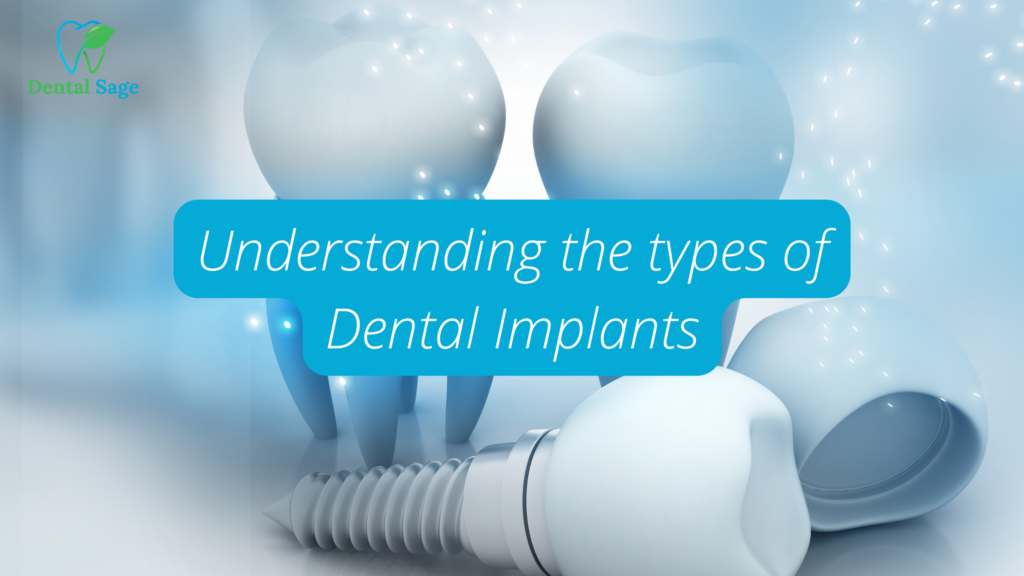Are you missing out on one or more teeth due to some reason and looking for a permanent solution for your teeth? If yes, you are now at the right place for Best Dental Implants in Bangalore.
What is a dental implant?
Dental implants are artificial structures created from pure titanium inserted into a jawbone. Because of their small size, they fit into the bone under the gum and look like a natural tooth. A person may require a dental implant if they have lost one or more teeth. The teeth for the implant can be customized to give a proper fit and look as per your need.
Now that we know what dental implants are? Let us take a look at their different types.
Various Types of Dental Implants
Dental implants are of three types.
- Endosteal
- Subperiosteal
- Zygomatic
An endosteal dental implant is the most common type. The next common type is the subperiosteal dental implant, followed by the zygomatic implant which involves a complex procedure, and is done rarely.

Endosteal Dental Implant
An endosteal dental implant is the standard type that suits most patients but requires a strong and healthy jawbone to fuse the post. They are typically made of titanium and shaped like screws inserted into the jaw, and a tooth is fixed on them. The procedure requires some time to heal and fuse with the bone firmly. Once the post is secured, false teeth can be placed onto the post to fit with adjoining teeth.
Subperiosteal Dental Implant
This type is an alternative to the endosteal dental implant. In this procedure, the subperiosteal implant rests on the bone that is under the gum but, is not fixed into the jawbone. The method involves a metal frame placed under the gum with a post attached. The gum later heals to hold the metal frame immovably. The false teeth are then fixed to the poles that emerge from the gum. This process is performed for patients who do not have enough jawbone to take up the implant that has to be placed or if the patient does not wish to go through rigorous oral surgery.
Zygomatic Dental Implant
Zygomatic dental implants are a rarely used procedure available. It is quite complicated and is adopted only if there is not enough jawbone for an endosteal dental implant. Here, the implant is placed in the patient’s cheekbone instead of the jawbone. This type includes lots of complications and is also painful as compared to the above two common implant types.
Next, we look at the various implant techniques for the best dental implants in Bangalore.
Substitute Dental Implant Techniques
In a few cases, complications arise where the jaw does not support implants and a Zygomatic implant is absolutely not possible. Hence, the dentist may suggest alternate methods for teeth replacement.
Bone Augmentation
Here, the dentist works on restoring the bone in your jaw if it does not support the implant. Bone additives are used to strengthen the bone and make the implant work.
Sinus Lift
In this procedure, the bone is added below the sinus if it has started to deteriorate as a result of missing upper back teeth.
Ridge Expansion
If the patient’s jaw isn’t wide enough for implants, your dentist will graft a material that has to be added into a space created on top of the jaw.
The above three techniques work by making space for implants. But, if none of these techniques works, your dentist may suggest some more methods for you.

Other Treatment Plans
3D Imaging
A few advanced, highly-precise 3D imaging and surgical implant planning tools make implant procedures likely and faster. Your dentist uses these tools to explore your jaw anatomy and identify the best sites for implants before surgery. The procedure conserves money, time, and recovery time.
Immediate Load Dental Implants
This type is like adding a reserve. It lets temporary placement of a temporary tooth on the same day of your implant placement. This option can be considered if you have enough bone and an implant that is secure enough to support immediate placement and bear the pressure of the temporary teeth.
Mini Dental Implants
These are also known as small or narrow diameter implants that are toothpick-sized and are much narrower compared to most implants. They are planted using less invasive techniques and are used to stabilize a lower denture. The procedure is ordinary, but one can consider it a great option.
All-On-4
This method is an alternate method to placing a top or bottom set of renewed teeth creating an arch. Four dental implants are available on the bone avoiding bone grafting. Special types of braces are used so that a temporary set of replaced teeth can be rested on the same day of the implant. You will be kept on a special diet until the gum tissues heal and are secure with your natural bone. Post six months, a permanent set of replacement teeth are fixed after which a regular diet can be followed.
Bottomline
Discovering your perfect smile isn’t complicated with the advancements in technology. There are several options to choose from to get back that healthy-looking smile. You just need to work closely with your dentist to understand your requirements.



